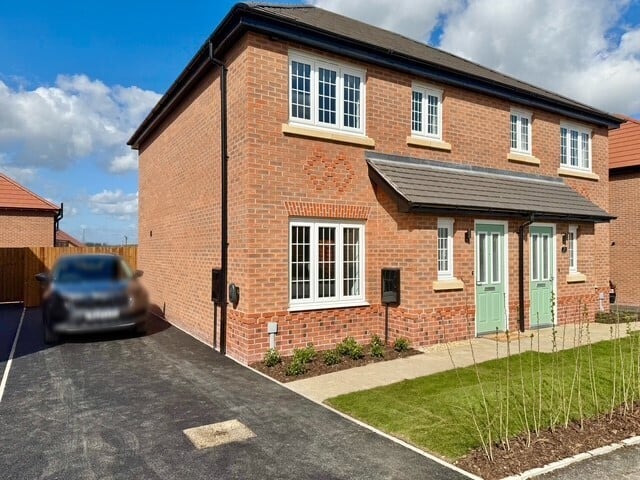Buying your first property is a huge milestone. Whether you’re purchasing a cozy condo, a suburban house, or a small investment unit, it’s a moment that brings both excitement and nerves. And rightly so — property ownership is one of the biggest financial moves you’ll ever make. But don’t worry, we’re here to walk you through it step by step.
In this blog post, we’ll go over everything you need to know — from budgeting to the final handshake — so you can enter the property market with confidence.
1. Understand Why You’re Buying
Before anything else, get clear on your “why.” Are you buying a home to live in, or are you looking for an investment property? Your reasons will determine the type of property you go for, the location, and your long-term financial goals.
For instance:
- If you want a family home, you might prioritize space, schools, and safety.
- If it’s an investment, rental yield and future growth potential will matter more.
Having clarity at the start will make the rest of the process smoother.
2. Check Your Financial Health
Now let’s talk money. You’ll want a solid understanding of your financial situation before you dive into property listings.
Here’s what to review:
- Savings: Do you have enough for a deposit (usually 10–20%)?
- Income and Expenses: What’s your monthly cash flow? Lenders will look at this.
- Credit Score: A good credit score improves your chances of loan approval and better interest rates.
- Existing Debts: Lenders consider your debt-to-income ratio. Less debt, better chances.
It’s a great idea to sit down and prepare a realistic budget. You can even chat with a financial advisor or mortgage broker at this stage to get an early feel for what you can afford.
3. Get Pre-Approved for a Loan
Once your finances are in shape, the next step is getting pre-approved for a home loan. Pre-approval means a lender has conditionally agreed to loan you a specific amount based on your income, credit, and financial situation.
This isn’t a guarantee, but it shows real estate agents and sellers that you’re serious. It also helps you shop with a clear price range in mind.
To get pre-approved, you’ll usually need to provide:
- Proof of income (payslips or tax returns)
- Bank statements
- Credit history
- ID documents
It’s smart to compare lenders and find the best rates and terms for your situation.
4. Determine Your Property Criteria
Now comes the fun part — deciding what kind of property you want.
Ask yourself:
- What’s your ideal location?
- How many bedrooms/bathrooms do you need?
- Is outdoor space a must?
- Are you okay with renovations, or do you want move-in ready?
- Do you want an apartment, townhouse, or detached home?
You’ll likely have to make some compromises, so list your must-haves and nice-to-haves.
Also, if you’re into parenting, consider how kid-friendly the neighborhood is — think parks, schools, and nearby activities.
5. Start the Property Search
Once your budget and checklist are in place, hit the ground running. You can browse online platforms, attend open houses, or work with a buyer’s agent. Find more by going here — there are plenty of property listing websites and local resources that can help you compare homes, neighborhoods, and prices in real-time.
Tips for a smart search:
- Compare properties in your price range and area.
- Look at recent sales to understand fair market value.
- Attend as many open houses as you can — photos can be deceiving.
Don’t rush. Finding the right property can take time, but when it feels right, you’ll know.
6. Make an Offer
Found “the one”? Time to put in an offer.
Work with your real estate agent to make a competitive offer based on market research. If the market is hot, you might need to go in with your best price. If it’s cooler, there may be room to negotiate.
Your offer will typically include:
- Purchase price
- Conditions (e.g., financing, building inspection)
- Deposit amount
- Settlement period
Once the seller accepts, you’ll enter into a contract. This is where things start to get real.
7. Do Your Due Diligence
Before you get too comfortable, it’s time to inspect the property inside and out. Hire a qualified building inspector to assess the condition of the property. They’ll check for:
- Structural issues
- Plumbing or electrical problems
- Pest infestations
- Roofing or foundation concerns
This step is critical — the last thing you want is unexpected (and expensive) surprises after moving in.
If problems are found, you may renegotiate or back out, depending on the contract terms.

8. Finalize the Loan
With the contract signed and your due diligence done, it’s time to finalize your mortgage.
Your lender will conduct a property valuation and review any last documents. If everything checks out, you’ll receive formal approval.
Then, you’ll sign the loan documents and prepare for settlement. This might involve:
- Transferring your deposit
- Organizing legal documents with your solicitor or conveyancer
- Arranging building insurance
9. Settle the Purchase
Settlement is the final step. On this day, legal ownership is transferred from the seller to you. Your lender pays the remaining purchase price, and you get the keys!
Before settlement, do a final walk-through to make sure the property is in the same condition as agreed upon.
Once settlement is complete — congratulations! You’re now officially a property owner.
10. Move In and Maintain
Whether you’re moving in or renting it out, now’s the time to enjoy the results of your hard work.
If you’re living there, start turning your house into a home. If it’s an investment, make sure property management is in place.
Also, be proactive with maintenance. A small issue today can turn into a big cost tomorrow. Keep records, budget for upkeep, and plan ahead for the long term.
Final Thoughts
Buying your first property is both a financial and emotional journey. It can be overwhelming, but it’s also one of the most empowering decisions you can make. With the right planning and guidance, you’ll navigate each step with more clarity and less stress.
Whether you’re buying for family, future investment, or to secure a place to call your own, the most important thing is to stay informed and trust the process. And remember — everyone starts somewhere. Your first property might not be your forever home, but it’s a powerful first step toward financial independence.
If you’re also managing other responsibilities like parenting or running a business — or even working in hairdressing — remember: balance is key. Don’t rush, stay organized, and lean on professionals when needed.




